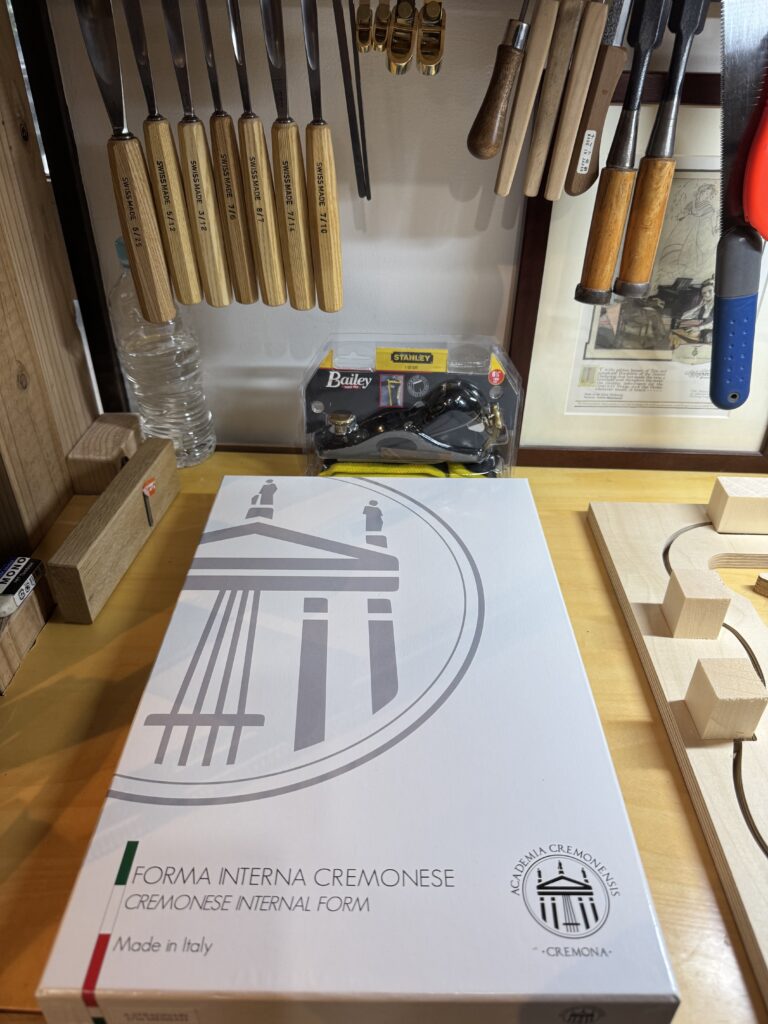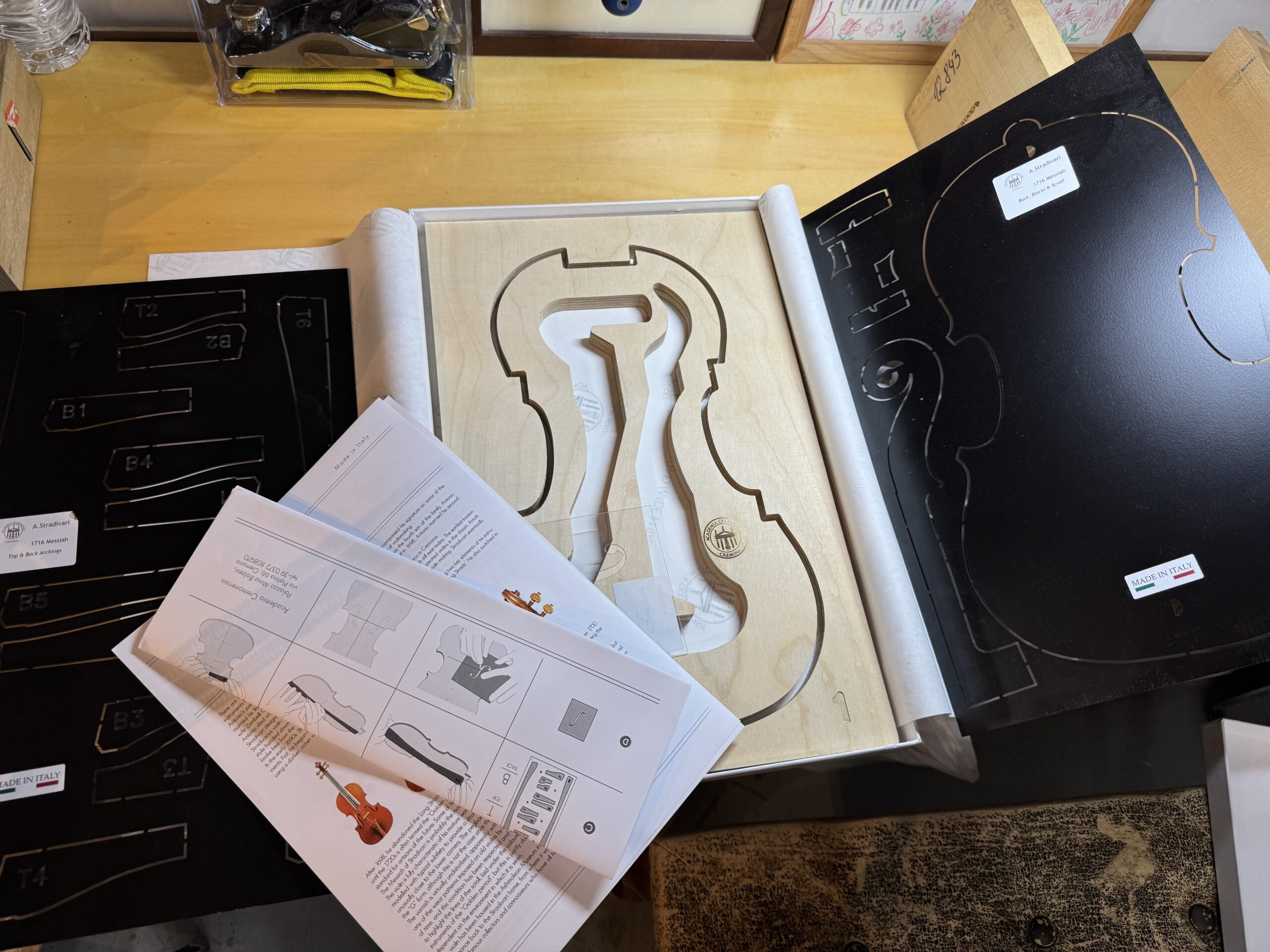Although I was going to make a violin, I had no idea how to shape all those curves, but as I researched, I learned about templates.
Templates are like “patterns” or “stencils” in Japanese terms – guides for creating specific shapes. While having them doesn’t make the job incredibly easy, they’re undoubtedly valuable tools, especially for complete beginners.
The templates I purchased are sold by the Italian Cremona school “Academia Cremonensis.” Although they’re classified as teaching materials, professional makers seem to use them too, as they were often sold out on various violin supply websites despite being widely advertised.
Among several available models, I managed to get the 1716 Stradivari model template. There was apparently a 1715 model too, but it wasn’t available anywhere. There was also a Guarneri model, which was interesting because of the episode about Masatsugu Suzuki thoroughly studying it, but I went with the Stradivari this time. In the future, I’d like to understand the subtle differences between these models, and since there are websites and books explaining how to make these templates, I hope to eventually try making templates myself.

バイオリンを作るとはいえ、曲線だらけの形状をどうやって整えていくのか全く未知の世界でしたが、調べていくうちにテンプレートというものがあることがわかってきました。
テンプレートとは、日本の言葉に置き換えれば「雛形」や「型紙」のようなもので、ある形の物を作るためのガイドのようなもの。なるほど、それがあれば鬼に金棒なんて簡単に済むことはありませんが、少なくともド素人にはありがたいツールであることは間違いありません。
今回購入したテンプレートはイタリア・クレモナの学校「Academia Cremonensis」が販売していて、教材という位置付けではありますが、本業の製作家の方も使用しているのか、様々なバイオリン関連のサプライヤーのサイトで紹介されていながらも多くは売り切れでした。
複数あったモデルの中から入手できたのは1716年のストラディヴァリモデルのテンプレート。1715年のものもあったようですが、どこにもありませんでした。ガルネリもあって、鈴木政吉が徹底的に研究したというエピソードもあって興味深かったではあるのですが、今回はストラディヴァリにしました。将来はそれぞれの細かい違いについてもわかるようになっていきたいですし、このテンプレートの製作方法について解説しているサイトや書籍もあるので、ゆくゆくはテンプレートの作成にも着手できるようになれたらと思います。
